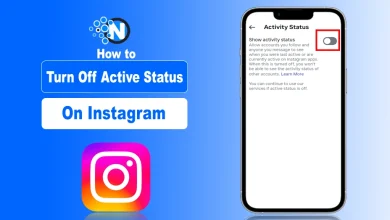How to Maintain Formatting When Making PDFs Editable

Back in the days, PDFs were impossible to edit, but somehow technology tools took the assignment and made it possible to edit a PDF. Now, the concern is how to maintain the original format when you start editing PDFs.
This is also going to happen with the right tool, practical methods, and proper chronological steps.
Are you searching for such a guide? If so, then don’t worry because this article describes the whole concept in a step-by-step guide.
Maintain the Original Format When Making PDFs Editable
Here is the guide to maintain the original format when making PDFs editable.
1. Choose the Right Software
First, you need to select suitable software when you want to make PDF editable. Several tools are standing ready, and each possesses distinct advantages. Some people will always stick to the exact design. Others find it far more important for something to be a breeze to use.
Selecting the appropriate software is vital; the program must genuinely correspond with the specific requirements of your document. Go for programs that make sure your writing, photos, and artwork always look the same.
2. Understand PDF Structure
A PDF’s structure consists of layers of text and images that you are going to edit in the tool. Therefore, you need to consider that each element is recognized and preserved during conversion.
Knowing how all these parts play a vital role together makes picking the perfect conversion settings much clearer. When you know this, your document holds onto its first look with a sure guarantee of 90%.
3. Use Optical Character Recognition (OCR)
OCR technology plays an important role in converting scanned PDFs into editable formats. It can actually read the words on your images and tell you what it looks like! This means you can update that text without messing up the picture’s whole style.
But you must be clear that the software you are using has a reliable OCR feature. It’s often hard to deal with documents that have a complicated look or notes written by hand. This makes those tasks much simpler and easier.
4. Maintain Text Formatting
Text formatting includes font type, size, and color, which gives the whole text its attractiveness and appeal. During conversion, these aspects should remain unchanged. PDF editor software often includes a function to secure visual templates in the PDF.
This prevents their unintended revision. Additionally, reviewing the document post-conversion helps catch any discrepancies. When your writing style stays consistent, the whole document just looks sharper and more reliable.
5. Handle Images and Graphics
Images and graphics often pose challenges during conversion because they can’t be edited so far. They need to be preserved in their original resolution and position in the PDF to give it its original look, just like before.
High-quality software maintains these elements without distortion. It is beneficial to check that images align correctly and retain their clarity after editing. This part really matters for any paper that uses lots of graphics.
6. Ensure Consistent Layouts
Layouts involve the arrangement of text and images on a page. If you keep things tidy, everyone will find it simpler to read. Software that includes pre-made layouts makes changing formats much easier.
Your layout stays put, helping everything flow easily from one idea to the next. Regular checks during the editing process ensure layouts remain intact.
7. Review and Proofread
Once a PDF is editable, you must review and proofread it because a keen is always essential to make the most out of anything. This part makes sure everything looks good and lines up. Checking each page individually helps identify any issues.
After getting everything on point, you can send or print that document knowing it’s flawless. Or if you find any flaws, then correct them on the spot for better alignment.
8. Test Across Devices
Documents should be accessible on various devices, whether smartphones or MacBooks. Testing the PDF on different screens ensures it displays correctly everywhere. You’ll spot how the layout changes on different screen sizes here.
A document that displays well on all kinds of gadgets makes it way simpler for folks to actually use it. This is called testing a PDF on different devices to save yourself from any issues.
9. Use Feedback for Improvement
You should gather feedback from others who review the document because new eyes often catch what others missed at once. Getting helpful pointers really buffs up the whole document.
Now, it’s time to incorporate suggestions because they lead to a more polished final product. One suggestion from us: Please get feedback on your work to get an idea to improve it further.
10. Save and Share
After ensuring the PDF is correctly formatted and editable, you can save it in a reliable format to maintain the structure. Choose formats that are widely accepted and easy to share within PDFs to make it easy for others to access the PDFs without any issue.
This prevents your file from getting scrambled for anyone else who views it, and sharing through secure channels protects the document from unauthorized edits.
Final Thoughts on Making PDFs Editable
Creating a PDF form that keeps its original layout takes a sharp eye and good software. By understanding the structure of PDFs, utilizing OCR technology, and ensuring consistent layouts, you can maintain the original formatting of an editable PDF.
When you look over the document often. This will help you to make it easy to understand everything necessary to maintain. A little forethought means your editable PDFs keep their crisp look and all their features so people can use them without any fuss.




